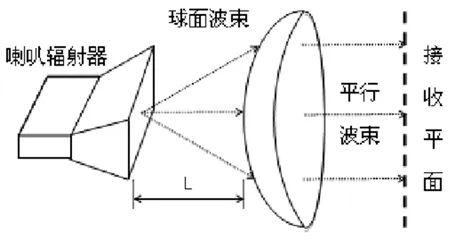Introduction
Lens antennas represent a sophisticated class of electromagnetic wave manipulation devices that are transforming high-frequency wireless communication. Unlike traditional reflector antennas, lens antennas use precisely engineered dielectric materials to focus electromagnetic radiation, offering unique advantages in beamforming, gain enhancement, and frequency flexibility. These antennas are becoming increasingly critical in 5G/6G networks, satellite communications, and advanced radar systems where precision beam control and wide bandwidth are essential.
Technical Principles and Advantages
Lens antennas operate on electromagnetic refraction principles similar to optical lenses but for radio frequencies. They consist of carefully engineered dielectric materials with specific permittivity characteristics that alter the phase velocity of passing waves. Key advantages include exceptional gain performance (20-40 dBi), wide bandwidth operation supporting multi-octave bandwidth, low side lobes (<-25 dB), electronic beam steering capability without mechanical movement, and minimal feed blocking compared to reflector systems. The most common types include dielectric rod lenses, Luneburg lenses, and Fresnel zone plates, each offering distinct benefits for specific applications ranging from satellite communications to automotive radar.
Applications and Industry Impact
Lens antennas are revolutionizing multiple industries with their advanced capabilities. In 5G/6G millimeter wave networks, they enable precise beamforming for small cell deployments and support massive MIMO configurations with reduced complexity. Satellite communication systems benefit from their low-profile designs for airborne and mobile terminals, providing 0.1° beamwidth accuracy and cross-polarization discrimination >35 dB. Automotive radar systems utilize lens antennas for 120° scanning capability, while imaging radar systems achieve 0.5° angular resolution. The technology is also transforming industrial and scientific applications including EMC testing with uniform field generation, radio astronomy with ultra-low noise characteristics, and medical imaging with precise energy focusing. The market is experiencing rapid growth with 35% CAGR in 5G mmWave deployments and 20% penetration in premium ADAS systems.
Future Developments and Trends
The lens antenna field is rapidly evolving with several key trends shaping its future. Multi-function integration combines beamforming, filtering, and polarization control in single integrated systems. Advanced materials including metamaterials with negative refractive index and temperature-stable ceramic composites are enabling new capabilities. System-level innovations feature photonic-enabled lens antennas and quantum-inspired beamforming techniques. Manufacturing advancements include additive manufacturing with 0.1mm precision, CNC machining with <0.01mm tolerance, and injection molding for mass production. These developments are addressing traditional challenges of size, weight, and cost while improving performance. The technology is moving toward AI-optimized designs, automated manufacturing processes, and standardized modular architectures that will further accelerate adoption across telecommunications, aerospace, defense, and consumer applications.
Conclusion
Lens antennas represent a paradigm shift in electromagnetic wave manipulation, offering unprecedented capabilities in beam control, gain enhancement, and frequency agility. As wireless systems continue to evolve toward higher frequencies and more complex operational requirements, lens antennas will play an increasingly vital role in enabling next-generation communication, sensing, and imaging applications. Their unique combination of performance advantages and manufacturing scalability positions them as key enabling technology for future wireless systems, with ongoing innovations promising even greater capabilities in the coming years.


